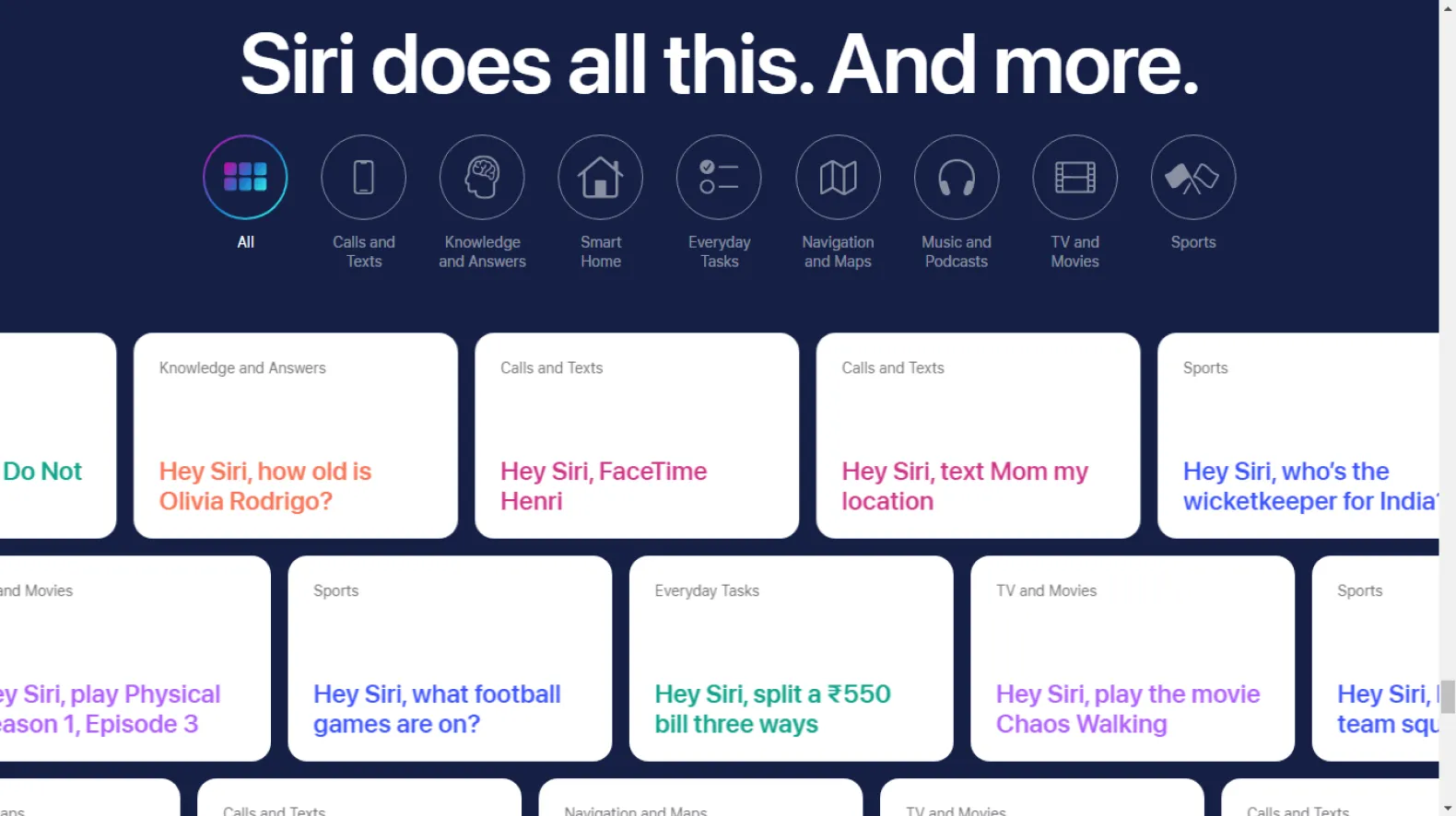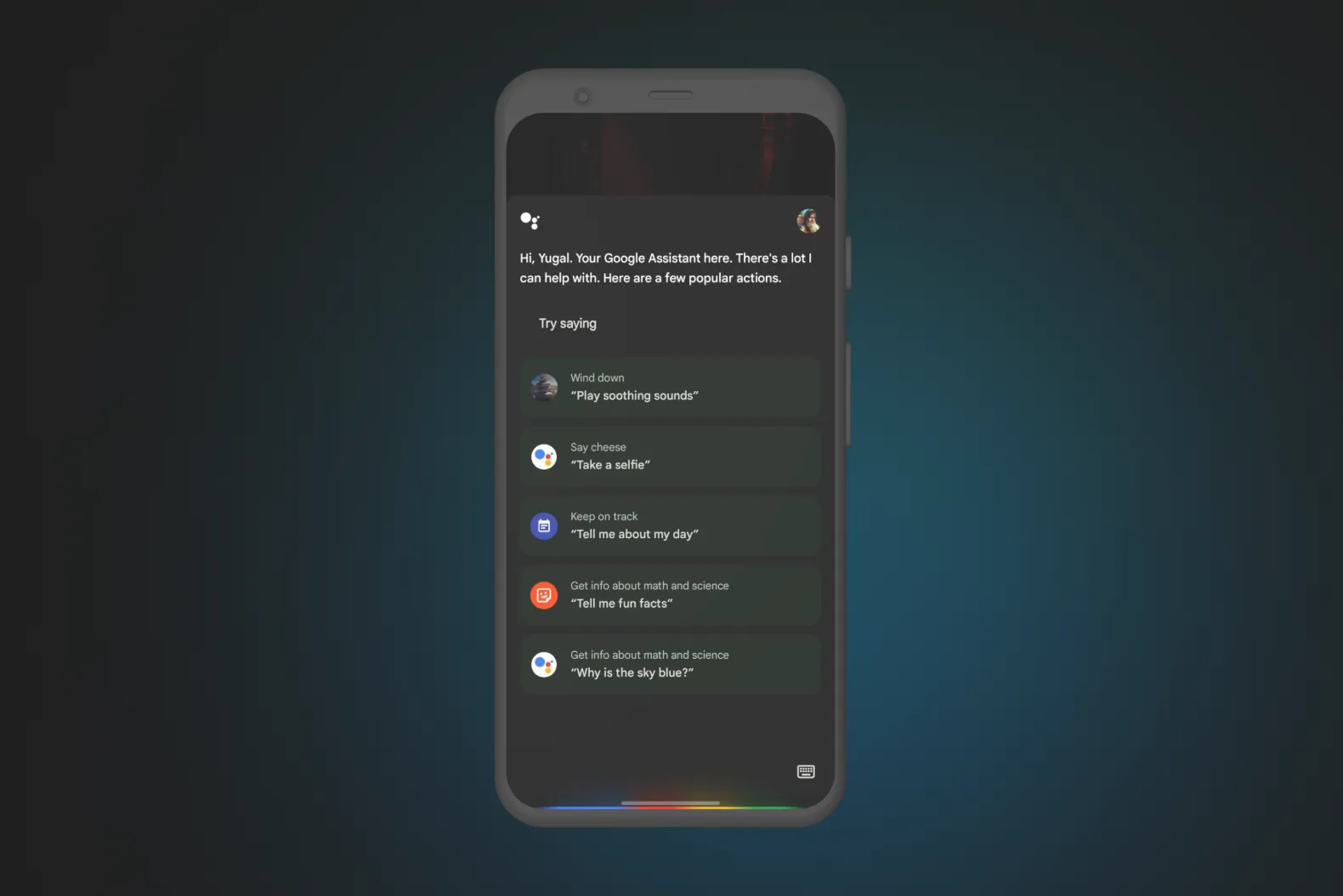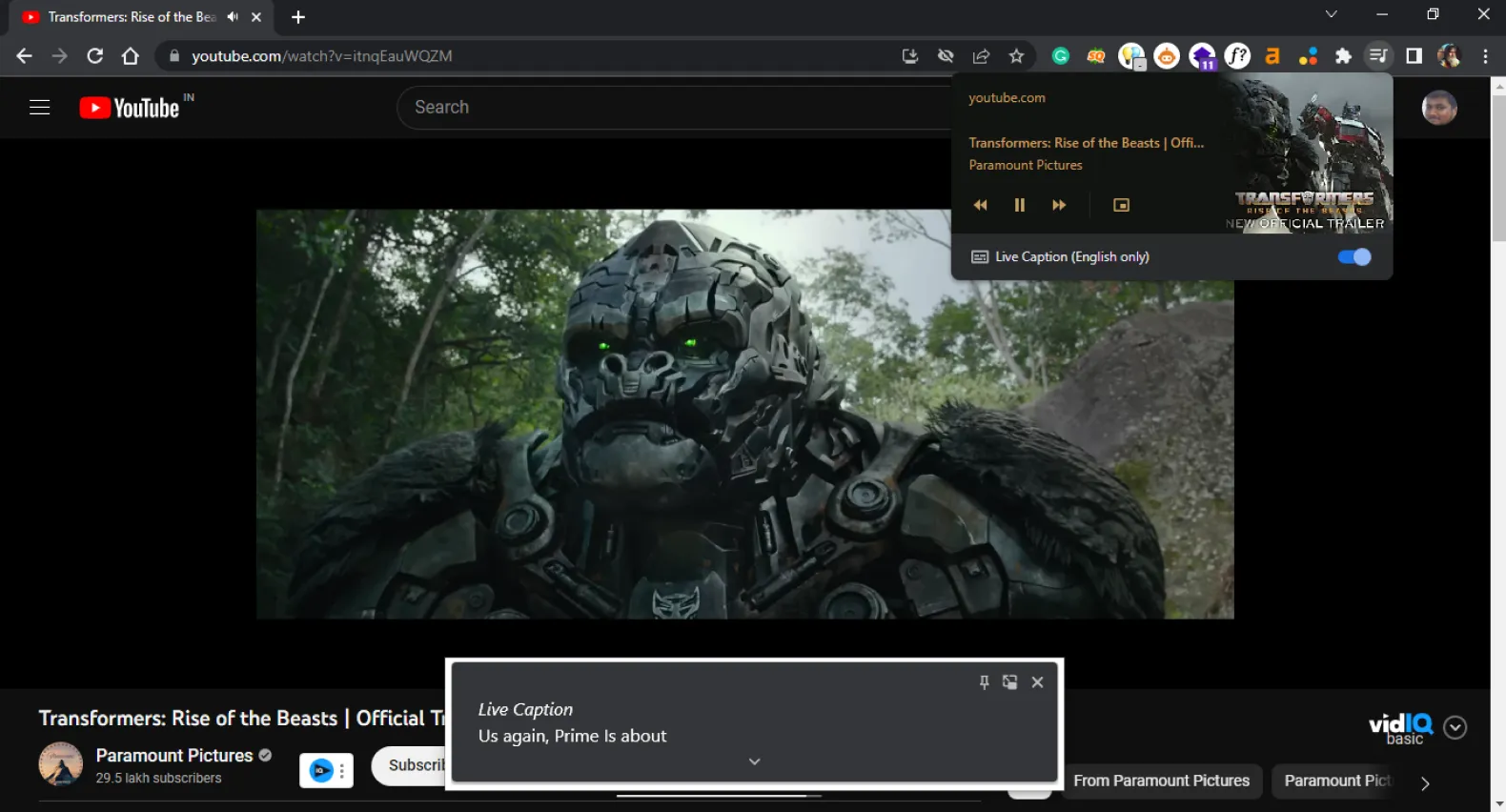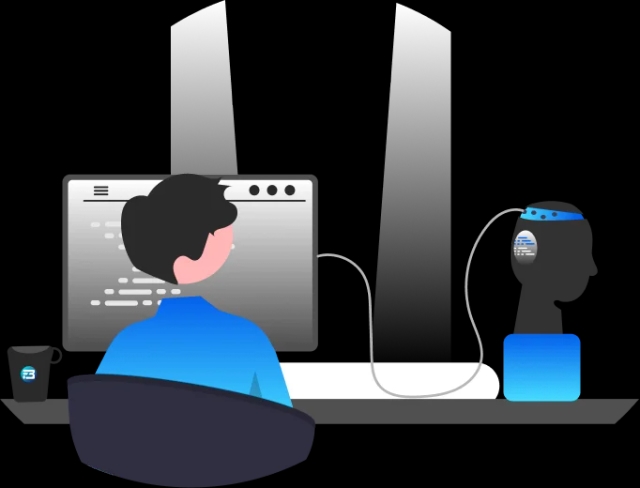ASR Applications
Top 7 ASR Applications Revolutionizing Industries in 2023
Explore 7 innovative ASR applications transforming industries in 2023, fostering growth and creating new possibilities for businesses across the globe
ASR Applications
Explore 7 innovative ASR applications transforming industries in 2023, fostering growth and creating new possibilities for businesses across the globe

In recent years, virtual assistants and smart speakers have become an integral part of our lives, transforming the way we access information, control our devices, and interact with technology. By leveraging the power of natural language processing (NLP), automatic speech recognition (ASR), and artificial intelligence (AI), these tools have significantly improved accessibility and convenience for users across the globe. In this blog, we will explore the world of popular virtual assistants, such as Siri, Alexa, and Google Assistant, and delve into their impact on our daily lives.
Virtual assistants harness the power of advanced technologies like NLP, ASR, and AI to provide seamless, human-like interactions. NLP enables virtual assistants to understand and process human language, while ASR helps convert speech into text, allowing users to communicate using their voice. Machine learning algorithms continuously improve the performance of virtual assistants, helping them better understand user intent and provide more accurate responses over time.
Popular Virtual Assistants and Smart Speakers
1. Apple's Siri
 [Image Source - Siri]
[Image Source - Siri]
As one of the first virtual assistants on the market, Siri has become synonymous with voice control on Apple devices. Siri offers a wide range of capabilities, from answering questions and setting reminders to sending messages and placing calls. Integrated with the Apple ecosystem, Siri can be accessed on iPhones, iPads, Apple Watches, and HomePod speakers.
2. Amazon's Alexa
 Alexa, Amazon's virtual assistant, powers the Echo line of smart speakers, offering users an ever-growing range of capabilities. With a vast library of Alexa Skills developed by third parties, users can customize their experience, adding new functions to suit their needs. Alexa can control smart home devices, provide news updates, play music, and even order items from Amazon, making it a versatile and powerful tool.
Alexa, Amazon's virtual assistant, powers the Echo line of smart speakers, offering users an ever-growing range of capabilities. With a vast library of Alexa Skills developed by third parties, users can customize their experience, adding new functions to suit their needs. Alexa can control smart home devices, provide news updates, play music, and even order items from Amazon, making it a versatile and powerful tool.
3. Google Assistant
 Google Assistant is a strong contender in the virtual assistant space, offering deep integration with Google services and Android devices. Available on a range of Google Home and Nest smart speakers, Google Assistant can answer questions, control smart home devices, and provide personalized recommendations based on users' preferences and search history.
Google Assistant is a strong contender in the virtual assistant space, offering deep integration with Google services and Android devices. Available on a range of Google Home and Nest smart speakers, Google Assistant can answer questions, control smart home devices, and provide personalized recommendations based on users' preferences and search history.
Virtual assistants and smart speakers have significantly improved accessibility and convenience in our daily lives:
●Voice control enables hands-free interaction, allowing users to set reminders, send messages, and control smart home devices without lifting a finger.
●Virtual assistants provide instant access to information, delivering weather updates, news briefings, and personalized recommendations at a moment's notice.
●Entertainment options abound, with music streaming, interactive games, and audiobook narration all available through voice commands.
Transcription services have experienced a tremendous boost in recent years, primarily driven by advancements in automatic speech recognition (ASR) and machine learning technologies. From real-time captioning and meeting transcriptions to making video content more accessible, transcription services are revolutionizing the way we consume and engage with information.
1. Real-time Captioning
Real-time captioning (also known as live captioning) is an invaluable tool that provides instant, synchronized text representations of spoken words, making audio content more accessible to a wider audience.
 It is especially beneficial for people who are deaf or hard of hearing but also aids in comprehension for non-native speakers or those in noisy environments.
It is especially beneficial for people who are deaf or hard of hearing but also aids in comprehension for non-native speakers or those in noisy environments.
Real-time captioning is now available on numerous platforms, including Zoom, Google Meet and Microsoft Teams, among others.
2. Meeting and Conference Transcriptions
Meeting and conference transcriptions are becoming increasingly popular, as they offer several benefits such as improved record-keeping, enhanced information retrieval, and increased productivity.
By converting spoken words into text, attendees can easily review, share, and reference the content discussed during meetings and conferences.
Many transcription services, like Rev, Temi and Otter.ai can generate transcriptions for various purposes, including business meetings, educational lectures, and industry conferences.
3. Video Content Transcription for Improved Accessibility
Video content transcription is crucial for making multimedia accessible to everyone, including individuals with hearing impairments or those who prefer to consume content with the sound off.
 By providing transcriptions and closed captions for video content, creators can reach a broader audience and improve the user experience.
By providing transcriptions and closed captions for video content, creators can reach a broader audience and improve the user experience.
Furthermore, transcriptions can boost SEO and content discoverability, as search engines can index the text, making it easier for users to find relevant videos.
Platforms like YouTube and Vimeo support closed captioning, while third-party services like 3Play Media and CaptionSync can assist with generating captions for various video formats.
Language learning has come a long way since the days of textbooks and cassette tapes. With advancements in technology, particularly in the fields of automatic speech recognition (ASR) and machine learning, language learning tools have become more interactive, engaging, and effective.
1. Pronunciation Feedback
Pronunciation is an essential aspect of mastering a new language, and modern language learning tools have made significant strides in providing accurate and constructive feedback. Utilizing ASR and machine learning algorithms, these tools can analyze a learner's pronunciation in real time, comparing it to native speaker models and offering instant feedback to help users improve their spoken language skills.
Apps like Rosetta Stone, Duolingo and Elsa Speak have integrated pronunciation feedback into their platforms, allowing users to practice speaking and receive real-time guidance on their pronunciation. These tools not only enhance language learning but also help build confidence in speaking a foreign language.
2. Interactive Language Exercises
Interactive language exercises have transformed the way learners engage with new languages, making the learning process more dynamic, enjoyable, and effective. By incorporating gamification, multimedia, and personalized learning paths, these exercises cater to various learning styles and keep users motivated.
Popular language learning apps like Babbel, Memrise and Mango Languages offer an array of interactive exercises, including vocabulary games, listening activities, and conversation simulations. These exercises not only reinforce language skills but also help users retain information more effectively through active engagement.
Voice-controlled systems have come to the forefront as an innovative way to interact with technology. By leveraging the capabilities of automatic speech recognition (ASR) and natural language processing (NLP), voice-controlled systems are becoming increasingly popular in various industries, providing seamless, hands-free experiences.
1. Automotive Industry: Hands-Free Commands and Navigation
In the automotive industry, voice-controlled systems have revolutionized the way drivers interact with their vehicles, providing a safer and more convenient driving experience. These systems allow drivers to perform tasks such as adjusting climate settings, making phone calls, sending text messages, and managing navigation, all without taking their hands off the wheel.
Several car manufacturers, including Tesla, Ford and BMW. have integrated voice-controlled systems into their vehicles. Furthermore, popular virtual assistants like Apple CarPlay, Android Auto, and Amazon Alexa Auto can be connected to compatible vehicles, allowing drivers to enjoy their favorite voice assistant features on the go.
2. Smart Home Automation
Voice-controlled systems have also made significant inroads in smart home automation, allowing users to control various devices and appliances simply by speaking. This hands-free approach to home automation makes it more accessible and convenient, catering to a wide range of users, including individuals with mobility limitations.
Popular virtual assistants like Amazon Alexa, Google Assistant and Apple Siri can be integrated with a variety of smart home devices, such as smart lights, thermostats, security systems, and entertainment systems. Users can create custom voice commands and routines, enabling seamless control over their home environment.
The healthcare industry is continuously evolving, and voice technologies have emerged as a promising area of innovation. By harnessing the power of automatic speech recognition (ASR) and natural language processing (NLP), healthcare professionals and patients alike can benefit from enhanced communication, streamlined processes, and improved outcomes.
1. Speech Therapy and Rehabilitation
Voice technologies have made significant strides in the field of speech therapy and rehabilitation, offering new opportunities for patients to regain their communication skills and improve their quality of life. These technologies can be particularly beneficial for individuals recovering from strokes, traumatic brain injuries, or speech disorders such as aphasia or dysarthria.
Apps like Constant Therapy, Speech Tutor and Tactus Therapy utilize voice recognition and analysis to provide personalized feedback on pronunciation, articulation, and fluency. Patients can practice various speech exercises and track their progress over time, enabling them to work towards their rehabilitation goals at their own pace.
2. Automatic Documentation of Medical Consultations
The process of documenting medical consultations can be time-consuming and labor-intensive for healthcare professionals. However, voice technologies can help streamline this process by automatically transcribing patient encounters, reducing the burden on clinicians and allowing them to focus more on patient care.
Services like Noto, Suki.AI and Saykara offer AI-powered voice assistants that can accurately transcribe medical consultations in real time, generating structured clinical notes and integrating them into electronic health records (EHRs). This not only saves time for healthcare professionals but also ensures more accurate and up-to-date documentation, ultimately leading to better patient care and outcomes.
Telecommunications is an industry that has experienced a significant transformation with the advent of voice technologies. Innovations such as voice biometrics for security and authentication, and conversational analytics for call centers have the potential to enhance customer experience and streamline operations.
1. Voice Biometrics for Security and Authentication
Voice biometrics leverages the unique vocal characteristics of individuals to provide secure and seamless authentication solutions. By analyzing factors such as pitch, tone, and speaking patterns, voice biometrics can accurately identify and verify users, improving security and reducing the risk of fraud.
Companies like Nuance, Pindrop and VoiceVault offer voice biometric solutions that can be integrated into various applications, including banking, insurance, and customer support systems.
The accuracy of voice biometric systems is highly dependent on the quality of speech training data used to build the underlying machine learning models. Diverse and representative datasets, such as those provided by FutureBeeAI, can significantly improve the performance of these systems, ensuring a secure and seamless user experience.
2. Conversational Analytics for Call Centers
Conversational analytics utilizes automatic speech recognition (ASR) and natural language processing (NLP) technologies to analyze and interpret customer interactions in call centers. This valuable insight can help businesses identify patterns, assess agent performance, and uncover opportunities to enhance customer satisfaction.
Solutions like Talkdesk, Invoca and CallMiner offer conversational analytics tools that can analyze call data, provide real-time feedback to agents, and generate actionable insights to improve overall call center efficiency.
Custom Speech training data plays a pivotal role in developing conversational analytics systems. By using high-quality and diverse datasets, companies can build more accurate and efficient models, enabling them to extract valuable insights from customer interactions.
The gaming industry has always been a hotbed for innovation, and voice-activated gaming is the latest trend gaining traction among developers and players alike.
As the gaming and entertainment industries continue to evolve, voice-activated technology is emerging as a significant innovation with the potential to redefine the way we interact with games and entertainment content. By leveraging automatic speech recognition (ASR) and natural language processing (NLP), developers are creating immersive, interactive experiences that engage players and viewers like never before.
1. Voice-Controlled Gameplay: Games such as "There Came an Echo" and "In Verbis Virtus" are examples of titles that have integrated voice controls to perform actions, solve puzzles, or cast spells, adding a new dimension to gameplay and offering a more immersive experience for players.
2. Voice-Activated NPCs: Some games are now featuring non-playable characters (NPCs) that can understand and react to players' voice commands. This adds a level of realism to the gaming experience and enhances player engagement with the game world.
3. Accessibility Features: Voice-activated gaming can also improve accessibility for players with disabilities or limited mobility. By allowing them to control game elements using their voice, these individuals can enjoy a more inclusive gaming experience.
Acquiring high-quality AI datasets has never been easier!!!
Get in touch with our AI data expert now!
